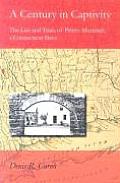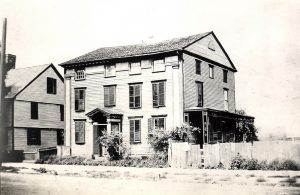Starr and Starr vers. Starr and Phillips, executors of Philip Mortimer
George and Ann’s young son, Philip Mortimer Starr, was in fact the main beneficiary of that will. But to inherit his great-uncle’s property, he’d have to change his surname to Mortimer on coming of age.
Before then, the will required the estate to grant land and £1,000 to the city of Middletown, Connecticut, to expand a cemetery and build and stock a granary. Maybe the Starrs opposed those plans.
The Starrs’ arguments that the will of Ann’s uncle was invalid were:
- Philip Mortimer was “not of sound disposing mind and memory” when he set up the will and codicils.
- The codicils weren’t completely signed and witnessed.
- Elihu Starr was too entangled in the situation as an heir, a witness, and an executor, not to mention the man who wrote out one of those codicils for Mortimer.
- The other witnesses to the will, Timothy Starr and Joseph Sage, were also heirs inasmuch as they were citizens of Middletown and therefore stood to benefit from that granary.
However, the majority of the court found that the technical violations of the law invalidated the will. Apparently someone should have told Philip Mortimer that he needed out-of-town witnesses, that he shouldn’t have made even small bequests to his witnesses and executors. Though I have a sense that telling Philip Mortimer what to do wasn’t easy.
Judge Jesse Root (1736–1822, shown above), a veteran of both the Continental Army and the Continental Congress, dissented from the court’s ruling. In fact, Root’s dissent took up most of the official report on the case. But his argument that the court should respect Philip Mortimer’s clear desires and overlook legalities didn’t carry the day.
In January 1796 the court negated the Mortimer will, ruling that he had died intestate. It appointed the husband of his nearest relative to administer the estate. The 12 February Middlesex Gazette carried this notice:
THE Subscriber, being appointed Administrator on the Estate of PHILIP MORTIMER, Esq. late of Middletown, deceased, hereby gives public Notice to the several Creditors, That the hon. Court of Probate for the District of Middletown has limited Twelve Months from the 30th Day of January, 1796, as the Time for exhibiting their respective Claims against said Estate. Those who neglect to exhibit the same to the Subscriber within that Time will be legally debarred of their Demands. All Persons indebted to the Estate are requested to make Payment, toCOMING UP: The fallout.
GEORGE STARR, Administrator.
Middletown, Feb. 5, 1796.











